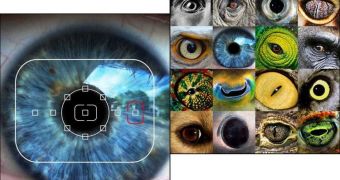University of Texas in Austin (UTA) Center for Perceptual Systems (CPS) experts have recently taken another important step forward towards discovering how the brain utilizes its visual auto focus mechanism to constantly ensure that our eyes are perfectly tuned to see an object.
The mechanism is triggered for both near and far objects, and it acts nearly instantly. From several perspectives, this ability is staggering, considering the amount of calculation needed to compile distances and adjust such a complex system as vision to it.
While this ability is impressive in humans, some species do it even better. In fact, the sheer complexity and diversity of vision systems is staggering. In all fairness, researchers trying to understand these systems have a handicap of several million years.
Psychologists Wilson Geisler and Johannes Burge announce that they were recently able to develop a new algorithm, one that enables its user to detect focus errors from a blurry image. The team believes that this is key towards understanding the complexity of biological systems.
At this point, the type of artificial focus achieved with cameras relies on repetitive guess-and-check attempts, which may or may not be successful. In either case, the process requires a lot of time and resources to complete, whereas the brain does it instinctively.
Therefore, the data collected from the new investigation could be used to innovate artificial vision systems, as well as to provide additional insight into how nearsightedness forms in humans. In the latter scenario, it may even become possible to address this condition by artificial means.
The way animal vision works is rather simple. At first, the amount of blur present in the image is calculated. Key features are extracted from what is being viewed, and then the vision system calculates the distance between the observer and the object.
This information is then sent to the visual processing area of the brain, from where new commands are sent to focus the eyes correctly. This entire process takes place within fractions of a second, experts say, but this is why vision is one of the most energy-intensive processes that can take place in the brain
Details of the new investigation were published in last week's online issue of the esteemed journal Proceedings of the National Academy of Sciences (PNAS).
“They've provided proof that there is enough information in a static image to determine if an object is too close or too far away,” Indiana University optometry professor and vision researcher Larry Thibos explains. He was not a part of the new research team.
“We've known for 50 or 60 years that people are very good at knowing whether or not something is in focus. It's taken this paper to show us how the visual system might accomplish this feat,” he adds.
“What we discovered is that the imperfections in the eye – things like astigmatism and chromatic aberration – actually help it to focus,” Geisler explains, quoted by ScienceNow.
“That may help explain why people who have had their astigmatism corrected through laser eye surgery often have trouble focusing for several weeks afterward,” he concludes.

 14 DAY TRIAL //
14 DAY TRIAL //